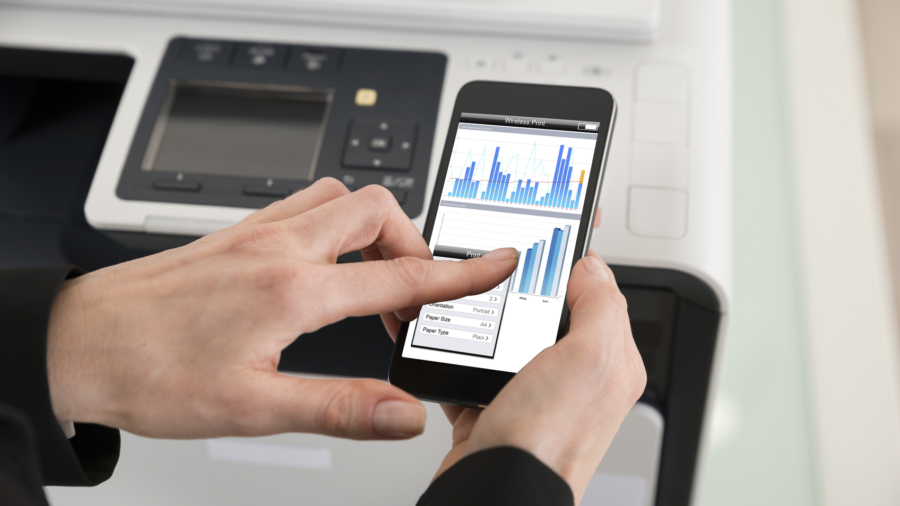Wireless printers offer great convenience, but they can sometimes be challenging to troubleshoot when issues arise. Here’s a guide to help you identify and solve common problems with wireless printers:
1. Check the Network Connection
- Same Wi-Fi Network: Make sure that both your printer and computer (or mobile device) are connected to the same Wi-Fi network. If your router has multiple networks (e.g., 2.4 GHz and 5 GHz), verify that both devices are on the same one.
- Reconnect to Wi-Fi: If your printer isn’t connecting, go to the printer’s settings, select Network Setup or Wireless Settings, and reconnect to Wi-Fi. Use the Wi-Fi password if prompted.
- Check Wi-Fi Signal Strength: Ensure the printer is within range of the router and has a strong signal. Moving it closer to the router can improve connectivity.
2. Restart Devices
- Power Cycle: Turn off the printer, router, and computer (or mobile device). Wait for a few seconds, then turn the router back on first, followed by the printer and then the computer. This simple reset can resolve many connectivity issues.
3. Update Printer Firmware
- Outdated firmware can cause compatibility issues. Visit the printer manufacturer’s website to download and install any available firmware updates for your model.
4. Run the Printer Troubleshooter (Windows)
- Windows Troubleshooter: Go to Settings > Update & Security > Troubleshoot > Additional troubleshooters, then select Printer. The troubleshooter can automatically detect and fix common issues.
5. Verify Printer IP Address
- Obtain Printer’s IP Address: Print a network configuration page from your printer (usually available in the Network Settings menu) to check the IP address.
- Ping the Printer: On a computer, open Command Prompt (Windows) or Terminal (macOS), type
ping [printer's IP address], and press Enter. If there’s no response, the printer may not be properly connected to the network. - Set a Static IP: Assigning a static IP to the printer can help maintain a stable connection. This can usually be done through the printer’s control panel or router settings.
6. Temporarily Disable Firewalls and Antivirus Software
- Sometimes, firewalls or antivirus software can block the connection to your printer. Temporarily disable these security features on your computer to see if they’re causing the issue. If it works, add the printer as an exception in your firewall or antivirus software settings.
7. Check Printer Status and Settings
- Set as Default Printer: Make sure the correct printer is set as the default. In Devices and Printers (on Windows), right-click your printer and select Set as default printer.
- Ensure It’s Online: Double-check that the printer status shows as “Online.” Right-click on the printer in Devices and Printers and select See what’s printing. If it says “Use Printer Offline,” uncheck it.
8. Clear Print Queue
- If there’s a backlog of print jobs, it can cause the printer to stop responding. Go to Devices and Printers, right-click your printer, and select See what’s printing. Cancel any pending jobs to clear the queue.
9. Use the Printer’s App
- Many manufacturers offer apps (e.g., HP Smart, Canon PRINT, or Epson iPrint) that provide diagnostic tools, printer status information, and troubleshooting tips. Download the app and use it to help identify and resolve issues.
10. Assign a New Wi-Fi Channel
- If your network is crowded (especially if using a 2.4 GHz network), interference from nearby devices can disrupt the printer’s connection. Log in to your router settings and change the Wi-Fi channel (channels 1, 6, or 11 are generally the least congested).
11. Reset Network Settings on the Printer
- Factory Reset: If you’re still having trouble, consider resetting the printer’s network settings to factory defaults. This option is usually available in the Network Settings or Setup menu. You’ll need to reconnect to Wi-Fi afterward.
12. Check for Operating System Updates
- Sometimes, an update to your operating system can solve compatibility issues with printers. Ensure your computer or mobile device is up-to-date:
- On Windows, go to Settings > Update & Security > Windows Update.
- On macOS, go to System Preferences > Software Update.
13. Add the Printer Manually
- Add a Network Printer: If your printer isn’t showing up automatically, try adding it manually:
- On Windows: Go to Devices and Printers > Add a printer, select Add a network, wireless, or Bluetooth printer, and follow the prompts.
- On macOS: Go to System Preferences > Printers & Scanners, click +, and select your printer from the list or add it using the IP address.
14. Contact Technical Support
- If all else fails, contact the printer manufacturer’s support team for further assistance. They can offer more advanced troubleshooting steps or provide guidance if a repair is needed.
By following these steps, you can often resolve common issues with wireless printers and enjoy reliable printing from any device on your network.

